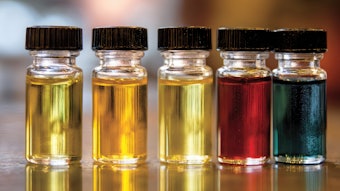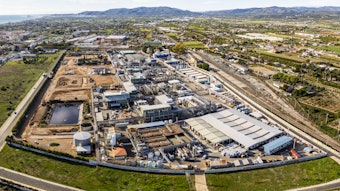
Abstract
Naturally produced sandalwood oil (N-SWO) is prized for its use, both in perfumery as well as for skin benefits. However, its availability has been severely restricted in recent years due to overexploitation. The industry has responded by using biotechnology to produce santalol—the key molecule in N-SWO. Using such biotechnology-derived and natural ingredients, an oil that mimics the composition of N-SWO was created. This reconstituted oil called Sacrosantola was compared to N-SWO for its safety and skin benefits, using various in vitro models. Compared to N-SWO, Sacrosantol showed a similar safety profile, photo-protective and anti-inflammatory benefits, as well as antibacterial properties. Thus, Sacrosantol can be used as a sustainable and cost-effective alternative to natural sandalwood oil.
Introduction
Sandalwood oil extracted from the bark and trunk wood of Santalum album L. by steam distillation has a characteristically warm, woody and creamy odor. It is approved by Food and Drug Administration, Council of Europe and Flavor and Extract Manufacturers Association and has extensive applications in cosmetics and medicines as per Ayurveda practices.1,2 The primary odorant of the oil is santalol, comprising 90% of the total oil composition, which mainly consists of α- and β-santalol. In addition to this, bergamotol and small amounts of sesquiterpene hydrocarbons such as limonene, santalene and bergamotene are also present.3,4,5
India is amongst the top producers and exporters of natural sandalwood oil (N-SWO), contributing to meeting the demand of 80% to 90% of N-SWO in the international market. However, since 1950 the production has dropped from 4000 tons to approximately 1000 tons at the beginning of the 21st century.6 This demand-supply imbalance has resulted in exploring several viable options, such as micro-propagation and other tissue culture techniques, in optimizing the unrestricted supply of sandalwood oil from India. However, a 20-year-old heartwood from Santalum album is utilized for the extraction of oil; hence plant regeneration seems far from compensating the international demand for N-SWO.7 Another alternative is to turn to other sources to acquire sandalwood oil, such as Australia, Fiji, New Caledonia or Africa.8 Nevertheless, the demand in 2020 has surpassed the number of trees available, leading to unsustainable and illegal agricultural practices in the endangered and protected forests of India, Australia and Africa.9
References:
- Burdock, G. A. and Carabin, I. G. (2008). Safety assessment of sandalwood oil (Santalum album L.). Food and Chemical Toxicology, 46 (2), 421–432.
- Misra, B. B. and Dey, S. (2013). TLC-Bioautographic Evaluation of In Vitro Anti-tyrosinase and Anti-cholinesterase Potentials of Sandalwood Oil. Natural Product Communications, 8 (2), 1934578X1300800.
- Braun, N. A., Meier, M. and Hammerschmidt, F. J. (2005). New Caledonian Sandalwood Oil—a Substitute for East Indian Sandalwood Oil? Journal of Essential Oil Research, 17 (5), 477–480.
- Brunke, E. J., Vollhardt, J. and Schmaus, G. (1995). Cyclosantalal and epicyclosantalal—new sesquiterpene aldehydes from East Indian sandalwood oil. Flavour and Fragrance Journal, 10 (3), 211–219.
- Demole, E., Demole, C. and Enggist, P. (1976). A Chemical Investigation of the Volatile Constituents of East Indian Sandalwood Oil (Santalum album L.). Helvetica Chimica Acta, 59 (3), 737–747.
- Sanjaya, Muthan, B., Rathore, T. S. and Rai, V. R. (2006). Micropropagation of an endangered Indian sandalwood (Santalum album L.). Journal of Forest Research, 11 (3), 203–209.
- Zha, W., An, T., Li, T., Zhu, J., Gao, K., Sun, Z., Xu, W., Lin, P. and Zi, J. (2020). Reconstruction of the Biosynthetic Pathway of Santalols under Control of the GAL Regulatory System in Yeast. ACS Synthetic Biology, 9 (2), 449–456.
- Venkatesha Gowda. (2011, October). Global Emerging Trends on Sustainable Production of Natural Sandalwood. (No. 15). In Proceedings of the Art and Joy of Wood Conference, Bangalore, India.
- Craig Bettenhausen. (2020). Sandalwood oil without sandalwood trees. C&EN Global Enterprise, 98 (46), 22.
For the full article, please check out the Perfumer & Flavorist+ April 2022 issue.










